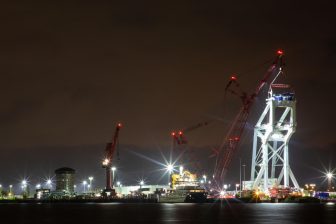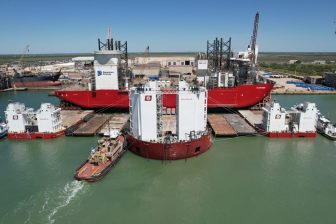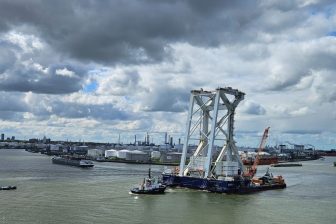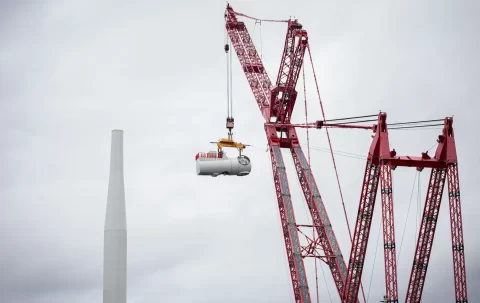
Mammoet: Installing Hywind Tampen’s wind turbines
The 88 MW Hywind Tampen offshore wind farm, the world’s largest, and the first to power offshore oil and gas platforms, produced power for the first time on Sunday. Mammoet handled the load-in, marshalling and turbine assembly.
The 8.6 MW Siemens Gamesa SG 8.0-167 DD turbines were installed on 107 metres spar buoys floating foundations due to the Tampen area seabed geology. This had to be done in port before the assembled turbines could be towed to the site. A spacer barge was needed between the quay and foundation to ensure enough clearance between the base of the foundation and the seabed. The turbine components would then need to be lifted over the quay edge, over the spacer barge, and then onto the foundations, over a distance of approximately 143 metres.
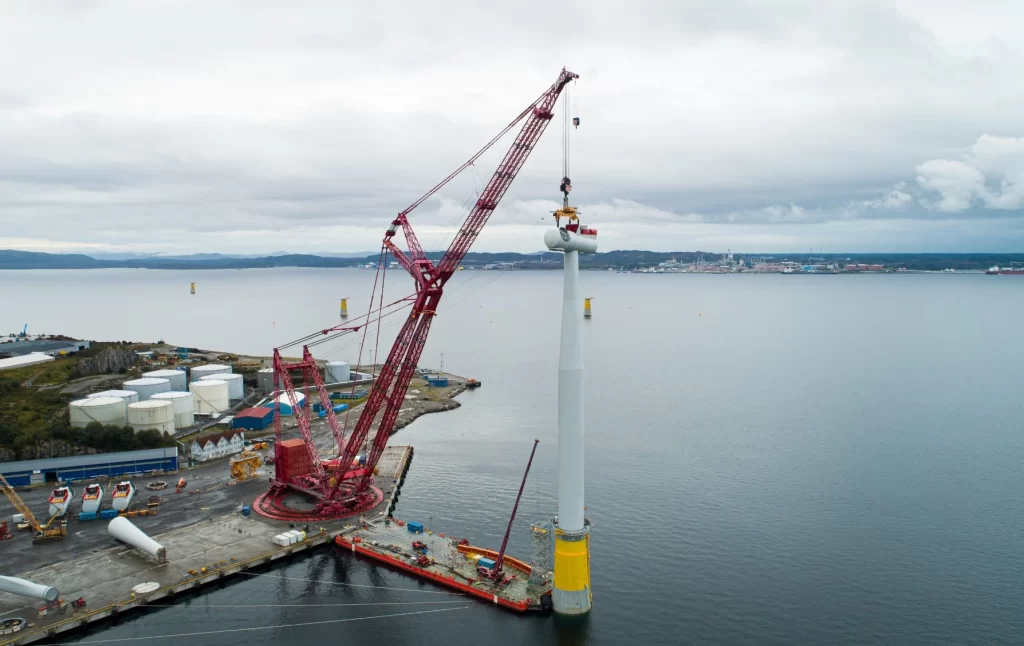
Martin Tieman, Mammoet Project Manager, explained: “We recognized that we would need a crane with a huge outreach to make the required lifts. The majority of land-based cranes in any fleet would not be able to achieve a 143 metres distance at these weights, but we knew that if it could be done the project would benefit significantly. This would create a smooth production line from marshalling yard to turbine assembly to commissioning – all at the same location – optimising the use of offshore assets.
This led us to look at the use of our PTC 200-DS crane, which is proving to be in high demand for big offshore wind projects such as the Greater Changhua development in Taiwan and Seagreen Offshore Wind Farm in Scotland. With the port confirming the quayside would be able to provide the required ground bearing pressures, we were able to put together a plan that would deliver a comprehensive package of port handling and assembly of all eleven turbines of Equinor’s development.”
Weather conditions were also an issue due to the large wind-catching surface of the components. The PTC 200-DS crane in use was modified to counteract this, with third-party blade yoke and tugger winch systems. This allowed the load under hook to be oriented without the need for taglines operated by hand. An LR1750 crane to assist the PTC with component rotation.
You just read one of our premium articles free of charge
Register now to keep reading premium articles.


